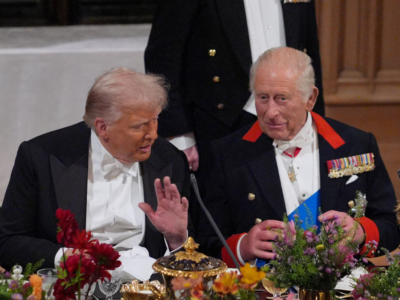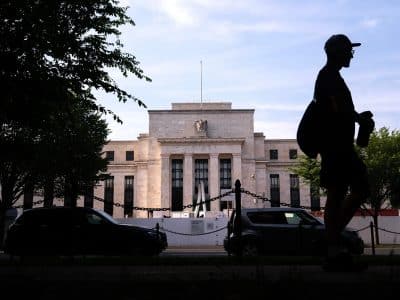By ITP
In pictures: Aston Martin celebrates 70 years of Vantage sports cars
The name Vantage proudly sits on more than a third of all the sports cars ever made by the luxury British brand Aston Martin
.jpg)
Spanning seven decades and covering some of the company’s most revered sports cars, the Vantage family forms a crucial part of the ever-evolving Aston Martin story (Photos courtesy of Aston Martin)
.jpg)
From the earliest days of the DB2 Vantage, through the iconic 60s cars: DB4, DB5 and DB6, into the muscular models that made Aston Martin a world-beater in the succeeding decades, then on through the brand’s game-changing ‘VH’ architecture cars and into today’s state-of-the-art Vantage sports car, this historic name has become synonymous with pace, power and more than a dash of style
.jpg)
The word Vantage first appeared alongside the Aston Martin brand name in 1950, with the debut in that year of the Aston Martin DB2 with Vantage specification
.jpg)
Many Aston Martin engineers and designers had a hand in the early Vantage programme, but a technical paper on valve timing tests stored in the Aston Martin Heritage Trust archive shows that renowned racing car design theorist Robert Eberan von Eberhorst – famous for his early work with the Auto Union team before moving on to later design the Aston Martin DB3 and DB3S – was overseeing the project
.jpg)
As with many of the early uses of the Vantage appellation, the title stood for a car with an uprated engine
.jpg)
Communicating the Vantage advantage at the 1951 Earl’s Court Motor Exhibition, an Aston Martin press release said: “On the 1951 Earl’s Court stand will be displayed two Aston Martin DB.II saloons, one fitted with the regular engine and one fitted with the ‘Vantage’ engine, the high speed regularity of which was demonstrated so forcibly at Le Mans this year and last.”
.jpg)
The arrival of ‘Vantage’ as a signifier of more potent performance gently caught on among the sports car aficionados of the time, but it was not until early the next decade that another of the brand’s road-going offerings officially appeared in uprated Vantage form.
.jpg)
The DB6 Vantage came next, in Mk I and Mk II versions, and followed the same tried and trusted upgrade formula as its potent predecessors. It utilised the same 4.0-litre straight six as it’s DB5 predecessor, with the same 325bhp output. The car is also again badged as a Vantage – a practice which began with the DB5 – with a discreet but important piece of nomenclature added to the side strakes.
.jpg)
The number of original Vantage-engined cars can be counted in the dozens, rather than the hundreds, meaning that these iterations of the DB6 today remain hugely desirable and jealously guarded by lucky owners around the world.
.jpg)
If the DB4, DB5 and DB6 represented evolutionary Aston Martin design, the arrival of the next Vantage engined model in 1967, the DBS, signified a real revolution
British stylist William Towns, a then junior Aston Martin interior designer, penned the angular, ‘modern’ shape that, in its original guise, retained the now familiar six-cylinder, 3,995cc Tadek Marek engine, available in Standard or Vantage form as used in DB6.
The next Aston Martin Vantage however – indeed the original Aston Martin V8 Vantage – was cut from very different engineering and performance cloth. It was hailed at its 1977 introduction as “Britain’s first supercar”. It could outrun a Ferrari Daytona in the 0-60 mph sprint, and if pushed to the limit it could record a top speed of 170 mph.
Its engine was shared with the Lagonda luxury saloon of the day, but it used high-performance camshafts, an increased compression ratio, larger inlet valves and bigger carburettors mounted on new manifolds for increased output.
A true British bruiser, the V8 Vantage’s performance belied its significant heft. Contemporary car magazine road tests claimed that the ‘old school’ Vantage offered superior performance to such greats as the Lamborghini Countach, the Ferrari 512BB and even the Porsche 911 Turbo of the day.
The V8 Vantage evolved significantly over the course of its reign – which spanned three decades and only ended in 1990 with final deliveries of the last 5.3-litre ‘X-Pack’ car.
The V8 Vantage’s chassis was stiffened with adjustable Koni dampers, shortened springs and a larger front anti-roll bar. Wider 255/60 VR15 Pirelli CN12 tyres were fitted together with spacers to widen the track.
Critical to the huge performance leap of this Vantage was a significant upgrade to the V8 engine which in the contemporary AM V8 was offering something in the order of 300bhp.
The 1990s saw the British brand continue its commitment to ‘brute in a suit’ sports car style with the appearance on the Virage-based Vantage – often referred to as the supercharged Vantage – in 1993 and, later, the next iteration of the V8 Vantage.
Heavyweight in every sense, this Vantage tips the scales at 1,990kg. It sports no fewer than six headlights and boasts massive 362mm diameter ventilated discs and four piston AP Racing callipers at the front: at the time, the largest brakes fitted to a road car.
Naturally such a luxuriously appointed grand tourer requires a substantial power source and in this case, it takes the form of a 5,340cc V8 with not one but two Eaton superchargers. With 550bhp and 550lb-ft of torque, this was, at the time, the most powerful production powerplant in the world.
In V600 form, as unveiled late in 1998, and additional 50bhp became available. This translates to a top speed of 186 mph and a 0-60 mph of 4.6 seconds – although it is rumoured that, during high speed testing, figures approaching 200 mph may have been recorded.
V550, V600 and V8 Vantage Le Mans special editions kept this Vantage fresh until production finally ended in October 2000.
The DB7 became the next Aston Martin to sport the Vantage badge when, in 1999, the DB7 V12 Vantage made its debut at the Geneva Motor Show. Comprehensively restyled by designer Ian Callum, it boasts a 5.9-litre, 48 valve, all-alloy, V12 engine delivering 420bhp and 400lb-ft of torque developed in close co-operation with the Ford Research and Vehicle Technology Group and Cosworth Technology.
Under the surface, the chassis was ‘beefed up’ too and features what at the time were completely new front and rear suspension setups. Up until then, the Vantage derivative of an Aston Martin car had mostly featured a tuned version of the standard engine but here, for the first time, the DB7 V12 Vantage had a new engine and was significantly different from the i6 car.
Today’s cutting-edge Vantage two-seater sports car is based on the marque’s latest architecture. Styled for aerodynamic excellence as well as obvious kerb appeal, the car features a 4.0-litre twin-turbocharged V8 engine with a peak power output of 503bhp and a torque peak of 505lb-ft, mated to a rear-mounted 8-speed automatic gearbox manufactured by ZF.







